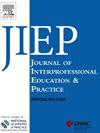Perceived use, effectiveness and barriers of interprofessional interventions in an integrated Canadian trauma system: A practice survey
Q3 Social Sciences
Journal of Interprofessional Education and Practice
Pub Date : 2025-08-29
DOI:10.1016/j.xjep.2025.100763
引用次数: 0
Abstract
Background
Effective interprofessional collaboration (IPC) is crucial for trauma care, but professionals often work in silos, leading to fragmented care. Interprofessional interventions can enhance IPC and trauma care quality, but their implementation and stakeholders' preferences are not well understood. We aimed to assess the perceived use, effectiveness, and barriers of interprofessional interventions in an integrated trauma system.
Methods
We conducted a cross-sectional survey across level I to III trauma centers within a Canadian trauma system (n = 33). The survey was emailed to trauma program managers or medical directors, who forwarded it to their trauma committee members. The survey included 17 interprofessional interventions categorized into practice, education, and organization. Responses were analyzed using descriptive statistics and thematic analysis.
Results
79 % of trauma centers responded (n = 26/33), including 10 level I-II and 16 level III centers, with 1–9 participants per center (n = 76). The most commonly used interventions were practice-based, including patient-centered care (72 %), interprofessional protocols (70 %), and trauma team activation protocols (61 %). Educational interventions (13–28 %, e.g., simulation) and organizational interventions (4–58 %, e.g., specialized teams, clinical pathways) were less common. Highly effective interventions were primarily organizational (93–98 %, e.g., specialized teams), with some practice-based (92–95 %, e.g., debriefing) and one educational (91 %, simulation) intervention. Barriers included limited resources, time constraints, and team instability.
Conclusion
Our survey revealed variability in interprofessional interventions within a Canadian trauma system, with some perceived as highly effective but underutilized. We also identified barriers to implementation, guiding future efforts to improve trauma care through interprofessional strategies.
加拿大创伤综合系统中跨专业干预的感知使用、有效性和障碍:一项实践调查
有效的跨专业合作(IPC)对创伤护理至关重要,但专业人员往往各自为政,导致护理支离破碎。跨专业干预可以提高IPC和创伤护理质量,但其实施和利益相关者的偏好尚不清楚。我们的目的是评估综合创伤系统中跨专业干预的感知使用、有效性和障碍。方法我们在加拿大创伤系统内的一至三级创伤中心进行了横断面调查(n = 33)。该调查通过电子邮件发送给创伤项目经理或医疗主任,他们将其转发给他们的创伤委员会成员。该调查包括17个跨专业干预措施,分为实践、教育和组织。使用描述性统计和专题分析对回复进行分析。结果79%的创伤中心有应答(n = 26/33),包括10个I-II级中心和16个III级中心,每个中心有1-9名参与者(n = 76)。最常用的干预措施是基于实践的,包括以患者为中心的护理(72%)、跨专业协议(70%)和创伤小组激活协议(61%)。教育干预(13 - 28%,如模拟)和组织干预(4 - 58%,如专业团队、临床途径)不太常见。高效干预主要是组织性干预(93% - 98%,如专业团队),还有一些基于实践的干预(92% - 95%,如汇报)和一种教育性干预(91%,模拟)。障碍包括有限的资源、时间限制和团队不稳定。结论:我们的调查揭示了加拿大创伤系统中跨专业干预的可变性,其中一些被认为是非常有效的,但未得到充分利用。我们还确定了实施的障碍,指导未来通过跨专业策略改善创伤护理的努力。
本文章由计算机程序翻译,如有差异,请以英文原文为准。
求助全文
约1分钟内获得全文
求助全文
来源期刊

Journal of Interprofessional Education and Practice
Social Sciences-Education
CiteScore
1.60
自引率
0.00%
发文量
80
期刊介绍:
Journal of Interprofessional Education & Practice, a quarterly online-only journal, provides innovative ideas for interprofessional educators and practitioners through peer-reviewed articles and reports. Each issue examines current issues and trends in interprofessional healthcare topics, offering progressive solutions to the challenges facing the profession. The Journal of Interprofessional Education & Practice (JIEP) is affiliated with University of Nebraska Medical Center and the official journal of National Academies of Practice (NAP) and supports its mission to serve the public and the health profession by advancing education, policy, practice & research.
 求助内容:
求助内容: 应助结果提醒方式:
应助结果提醒方式:


